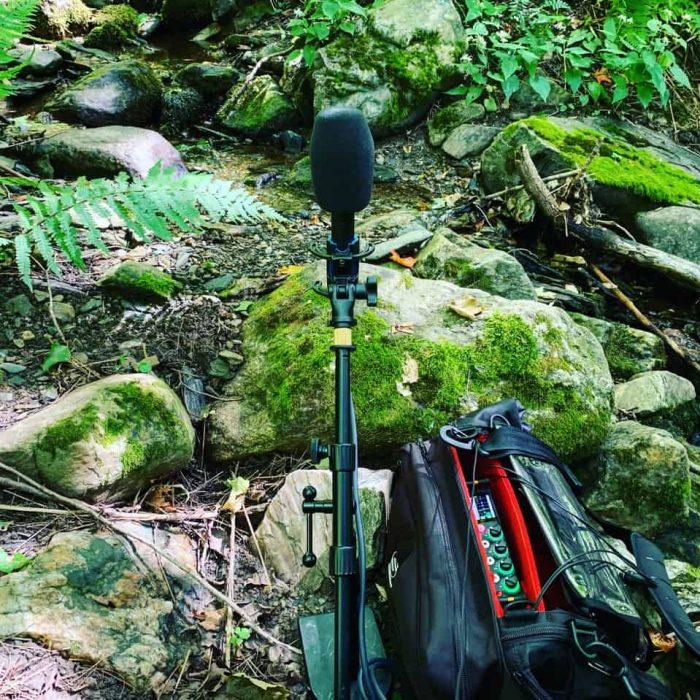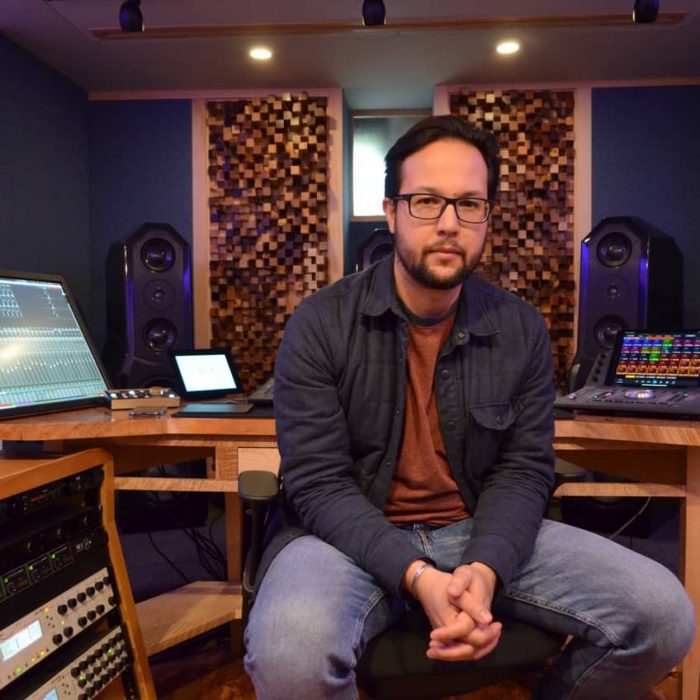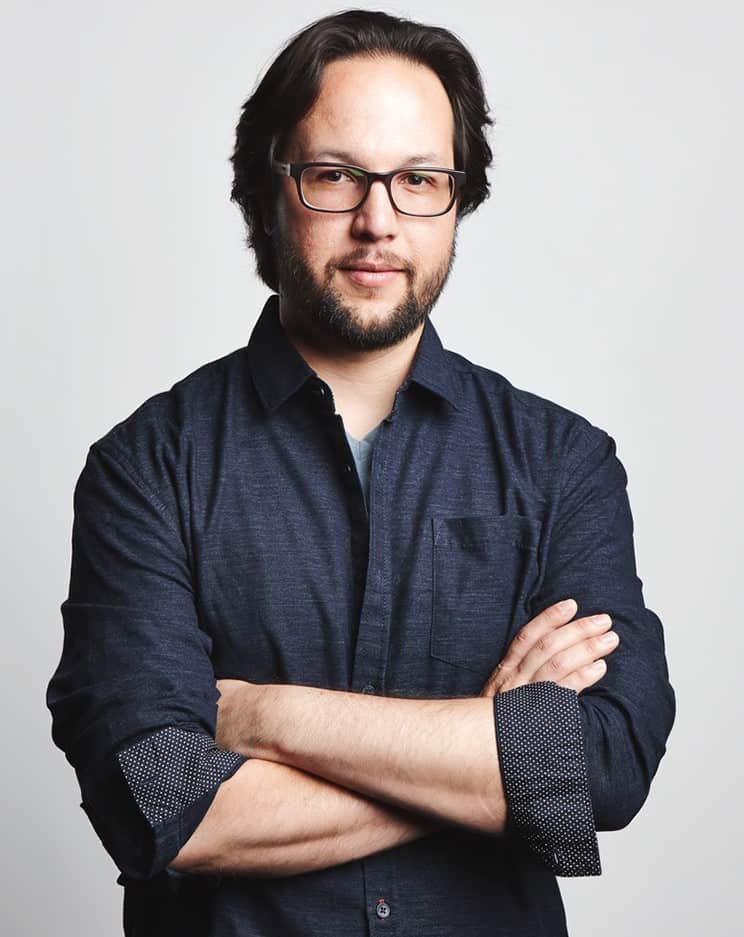John Escobar is a leader in the field of immersive audio production and engineering. As an assistant professor at Berklee College of Music, he is helping shape the next generation of creators to follow in his footsteps and bring innovation to the world of music. Amidst his many current projects, Escobar is also working to address the production challenges of a socially distant world by providing remote recording services. He still finds time to look forward to future developments and projects, and we were grateful to steal some of that time to connect with him.
You are known as both a sound engineer and music producer. In your opinion, what is the difference between the two? Do you identify with one “title” more?
I think there is a blurry line in today’s industry between the two disciplines. I learned that a producer is the person responsible for the projects’ musical direction as well as the personnel, location, budgetary and miscellaneous other logistics. In short, the producer understands the artists’ musical vision and is the liaison for bringing that into reality. The engineer works closely with the producer to achieve the highest quality recordings/mixes and is responsible for ensuring the vision is captured accurately both technically and artistically. In short, the engineer should know how to interpret creative musical directions and translate them into the most appropriate technological solutions.
I get hired for both of these roles (and maybe more often as an engineer), and I think I, like many, contribute to blurring the line between the two titles. I love technology and audio equipment. I find it fascinating to figure out the puzzle of how something works, and to find creative ways to use that in music. However, I have always liked technology for art’s sake, and not just because of science behind it. That is to say, I have always only cared about the gear as long as I can figure out how I am personally going to make music/art with it and incorporate it into my workflow. I approach it from the “musician first, technician second” perspective. Perhaps because of this, I frequently find myself in situations where I am part of making musical/performance decisions even in projects where I am hired as the “engineer”. So, I see myself as a hybrid of the new work model really, a producer-engineer.
What do you use to listen to surround sound or immersive music at home?
We have a 5.1 ATC based system in one of our control rooms and an 11.4.2 Eggleston system in the other. In addition to that, I have a consumer 5.1 system in our “home theatre,” and a variety of head-mounted systems like Oculus and Bose Frames, etc.
Do you believe all music should be produced in immersive audio?
I don’t think we are quite ready for it from a consumer perspective (though getting closer every day). I think all genres of music have something to offer in the format (some more than others), but we are still working on finding a truly compelling way of letting the general public experience this, while accommodating to the wireless, mobile nature of modern media consumption. Some genres, such as classical, seem to have adopted some elements from immersive very quickly and successfully. And because it is a musical style that is very rooted in tradition, this gives the listener a much more pristine listening experience, based on immersion into the performance. But, I think it does somewhat depend on the foundation of each specific genre - to know what you should be listening for and how it differs from the “old way”. Other more contemporary artists like Imogen Heap, and others specifically within genres with heavy electronic instrument use, have used the platform to create sounds and deliver them in unexplored ways that expand their musical toolkit.

You recently incorporated Dolby Atmos to your Whiskey Lane studio. What was that process like, and have you produced new music in Atmos yet?
Whiskey Lane is a brand-new facility. In fact, we only got a couple of projects in before COVID hit. The ATMOS installation was challenging as far as physical height, speaker placement and ensuring the space for them met ATMOS standards. The studio is basement level, so ceiling height is limited. We actually ended up having Eggleston custom-make the speakers so they would be low profile and fit in the space we had designated. Beyond that, the system configuration takes a little getting used to with all of the DANTE signals involved. We look forward to jumping into production with a few more projects soon, now that the COVID situation seems to be lifting a little in MA. But we are still being very cautious of how and what we plan in case things recede this fall.
You’ve recently entered the world of academia to share your skills with the next generation of audio engineers, what have been the most rewarding parts of teaching?
I have always found it satisfying to share the things I know with others. Teaching has allowed me to really expand on that, by not only teaching within the boundaries of my expertise but also sharing challenges I have encountered. There is an enormous wealth of audio-related information out there, and I think it’s my responsibility as a teacher to help my students “curate” what to pay more attention to. Often, I find that if we explore/experiment together, it will help them form their own personal understanding and opinion rather than just taking me at my word. That “aha” moment is always great.
What would you tell students and young producers to get them more involved in immersive audio in their careers?
I think every new technology brings great new challenges, and at the same time reinforces appreciation of existing concepts and technology. So, from an educational standpoint, I think immersive audio illustrates that really well. From a career growth perspective, I think this is a huge asset to your skillset. Culturally, we consume more media than ever, on a ton of platforms. Immersive audio fits into several of those. So, the demand for people who know how to produce immersive content is growing by the day, to the point where companies are creating immersive audio/video specific teams to guide them into new ways of marketing their products.
When did you first begin producing music in immersive audio?
I started to really dive into immersive audio consciously around 2015. It began with a few experiments at Berklee, followed by doing some consulting work with several of my Berklee colleagues for Harmonix to help them think through some of the issues with the Rock Band VR release.
Who are some artists or engineers who have shaped your work?
There are many sources of inspiration from all over. However, specifically for the immersive audio-related work, I have looked to people like Andres Mayo, Morten Lindberg, Imogen Heap, and Steve Genewick, who are all doing very interesting work with the technology from various angles.
What is your most memorable moment or proudest achievement pertaining to your career thus far?
Hard question. I feel fortunate to have enjoyed a diverse musical career to date, and so there is a variety of memories to choose from. From my work in immersive audio, one of the biggest highlights is the series on recording ambisonics, which I did with Berklee Online. This was a special treat, as we recorded the culminating musical performance in Boston Symphony Hall, with a great string quartet. The sound of that space with full surround immersion is something that is hard to beat. We actually ended up winning a few awards with that project, including the one for our use of immersive audio, as well as 360 videos. More recently, I recorded a project with the NPR “From The Top” show, detailing a big beautiful church pipe organ. This is still in production, so I don’t want to spoil it, but I am very excited about the initial recording, and I think the final product will be very cool.

You’ve set up remote recording services in the wake of COVID-19. What do you envision as the future of immersive audio and recording in general now that the world is more increasingly “remote”?
From the work I am doing, and the discussions I’ve been a part of, it seems to me that immersive technologies in general will become almost a necessity, the longer we are in these isolating conditions. More and more, my clients are looking to not just put out a video that sounds good, but also capture their audience in a meaningful way, provide them with a real experience. It has only been four months or so, but I think people are already starting to wonder how many more Facebook live “shows” they can do and still have an audience. Going to a show is all about the sights and sounds that go along with the music on stage and complete the experience. It’s about seeing the monitor or front-of-house engineer doing their thing, etc. Otherwise, you might as well stay at home and listen to the record. In that sense, perhaps COVID-19 is a catalyst to forcing us to make the next-level decisions regarding these technologies.
In your opinion, what is one of the most exciting recent or upcoming developments in immersive audio technology?
I think the fact that within the last couple years or so every major DAW has jumped on the bandwagon and offered their own versions of expanded channel count recording and mixing support is a great sign that this is here to stay. It’s a great hint to all content creators that they should be thinking of incorporating this into their projects.
You have a varied and impressive portfolio, including projects at global companies like Walt Disney Pictures and Universal Music, work with Grammy winning artists like Macklemore and Ryan Lewis, and positions at renowned universities like Harvard and (currently) Berklee College of Music. What is your next dream venture?
When put that way, it seems like I have arrived and may be done ☺. But on a more serious note, especially considering today’s global crisis, I feel very fortunate to be in the position I’m in. To be honest, I’m not sure I’ve always set out to specifically do any of these things. I’ve just taken opportunities that presented themselves to me. “Put my pants on one leg at a time”, as they say. At the moment, I am incredibly inspired by the response to our remote recording systems, and the solutions (challenges) those bring. It’s a great big puzzle to solve, and along the way I hope others will become inspired, so we can all continue to get music to perhaps even more people than before. Every major media distribution platform I can think of will soon have to reinvent some aspects of how they deliver fresh content to the masses. Certainly, this is a moment unlike any other I’ve ever lived through, and I’m fully intent on looking forward, not back, to see where I land.

